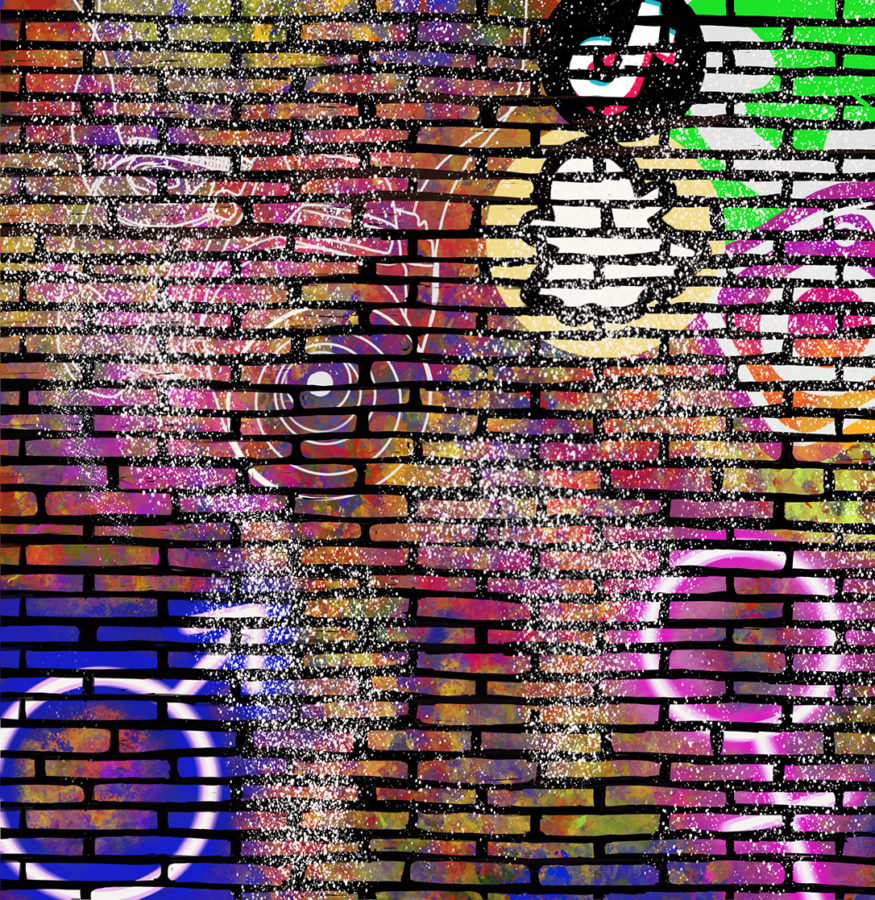The Consequence of Influence
The lenses of life that shape our perception of our physical appearances.
When asked to describe their bodies, JIS students noted the following: “remorse”, “progress”, “lovely”, and “fat”. As a way of voicing our regard for our bodies, we coined a few more terms: “unique”, “soft”, “repairing”, “dysmorphic”, and “mine”. Our relationship with our bodies is one of the most complex affinities we are bound to have: one that is ever-changing, everlasting, resentful, messy, and highly influenced by the outside world. Specifically, social media, culture, and gender expectations can impact our perceptions of our bodies in a way that vandalizes our self-esteem and alters expectations.
Social Media
As far as physical appearance is concerned, social media has been proven to enforce seemingly warped perspectives upon its users. As found in a study by The Mental Health Foundation, a charity in the United Kingdom, 40% of teenagers revealed social media as a primary proponent of negative or worrisome body image—a finding that reflected the opinions of the JIS community.
“On social media, there’s a lot of people [who] are incredibly attractive and have better genes than I do,” lamented one respondent, who reported that social media had significantly affected how they perceive their physical appearance. “It’s just a constant thing that I’ll always see and compare myself to.”
The third-highest-ranking country for social media usage in the Asia Pacific region, Indonesia is home to roughly 190 million active social media users. Given that 30 million are teenagers and adolescents, its effects are likely prominent and apparent among the youth.
“I felt like I had to fit a certain body type or face to be considered attractive,” admitted sophomore Trisha N.. Another respondent explained, “Looking at myself and realizing I don’t look like [online influencers] has made me more insecure about myself.”
However, while this aspect of comparison may appear daunting in the eyes of some, others perceive it to be a proponent of positive change.
“I started looking at fitness influencers on social media, and [they] motivated me,” voiced freshman Michael T.. Another respondent stated, “I have been more aware of what I desire for a physical appearance[.] [W]ith social media, I started getting motivated and healthier.”
Furthermore, for a select group of others, social media may not be considered an influential factor at all.
“I use social media to look at drawings and shows I like,” explained one junior. “I’ve never really been into the beauty side of social media. I’ve basically curated my online experience to lean away from that kind of media.”
Culture
Despite its seeming position as a relatively nontraditional factor, culture has had a notable impact on how JIS students perceive their physical appearance. Specifically, those who stem from Asian heritage or identify with one or more of its cultures consider it to be an inescapable and demanding pressure: one that cannot be as easily avoided as social media.
“As an East Asian… cultural standards of beauty are often harshly expressed… and the elders of my family would comment frequently on weight, [even though] nothing you do will please them,” one senior admitted. Another shares, “If my uncle’s daughter has more weight in her body, my mom would say, ‘Why doesn’t she diet? She can’t control herself; isn’t she ashamed?’… But if she is even just slightly skinnier than normal, my mom would say, ‘What are they feeding her—nothing? She does too much exercise. Being too skinny is not good; eat more.’”
As seen in the previous responses—in addition to a handful of others—body weight is a common yet ill-defined beauty standard to which Asian students feel particularly subjected. This sentiment is reflected in a study by BMC Public Health, which reports that a high percentage of East Asians who are of average or underweight view themselves as overweight, thereby displaying the unhealthy extent to which a slim, skinny, or “perfect” figure is attained. However, it is not the only aspect upon which judgment is placed.
One senior explains, “I [am] Korean, and I feel like our culture views white skin as ‘beauty’. Conversely, I am quite tan, and for that reason, most Koreans disregard my physical appearance.” Another agrees, saying, “It gets very tiring and damaging to my mental and physical health to deal with all of [my family’s] ‘little’ comments.”
Indeed, fair skin is yet another beauty standard to which Asian students feel pressured to conform: one that may be particularly frustrating to those born with darker skin tones, such as South or Southeast Asians. However, its influence is not limited to Asia alone: as voiced by one freshman, Latin Americans, too, feels the pressure to flaunt lighter skin tones.
Specifically, when discussing its origins, she suggests, “There are a lot of beauty standards in Central and South America that stem from colonialism, such as the desire to be blonde, white, and thin. Not meeting these expectations… has impacted my and many other people’s body image.”
Uma R., a sophomore, further highlights this connection between locality and external stimuli, stating, “In my culture, foreigners are usually considered more attractive than the local people. So, I think most of my ‘foreign’ friends are extremely attractive.”
Gender
Gender expectations—an issue that is as personal as it is universal. People across the gender spectrum feel compelled to conform to expected physical traits.
Women are expected to be paradoxically petite yet voluptuous. The majority of women ages 12-50 grapple with the restrictive and expected conformity of the feminine appearance. Multiple respondents blamed the cultural phenomenon of diet culture that has left countless women starving to fit the mold of what a female body should look like—an unrealistic mold designed with little regard for anatomy or health.
One JIS freshman went as far as claiming gender expectations have significantly impacted her perception of her body. “As a girl, I constantly face beauty standards about weight… and the need to stay thin.” In fact, 60% of participants reported that gender had a moderate to significant impact on the perception of their own physical appearance.
In contrast, the majority of male respondents indicated that they are expected to be tall and muscular. “I am pressured to work out”; “boys with my age go to the gym”; and “men should be strong and masculine.” There is a growing awareness around this issue and our school community reflects just how prominent this overlooked issue is becoming.
While cisgender men and women often strive to meet the accepted traits of masculinity and femininity, non-binary people struggle to express their gender identity—making a complex issue even more complicated, with the chains of their natural appearance weighing down how they wish they were perceived. For example, when the physique someone is born radiates the gender they do not conform to, it can lead to feelings of gender dysphoria and doubt regarding identity.
Being regularly perceived as anything other than authentic is challenging by nature. As noted in A Year Without a Name, a book by non-binary author Cyrus Dunham, “[Being referred to as female] registered as a sharp reminder that [their] attempts at something other than femininity were failing.” Bodies are forms of both expression and perception, and complicated and resentful relationships between ourselves and our bodies can result if we feel that our bodies do not represent our identities accurately. Notably, not all gender non-conformants strive for androgyny. In the case of non-binary folk or trans-men, breasts and other womanly features can impact how gender is discerned, accordingly leading to the use of chest binders, despite their reportedly uncomfortable wear.
Women, men, and everyone in between face complications of gender and beauty expectations. With fluctuating boundaries regarding femininity, masculinity, and androgyny, these expectations impact how we regard ourselves and how we are regarded by others.

—
Whether positive or negative—though most commonly the latter—these external stimuli affect the way we perceive our physical appearance. Despite our longing to be rid of them, their existence in our lives are, unfortunately, permanent, as are all other influences that seemingly dictate our everyday choices and beliefs.
However, that need not always be the case. By knowing and acknowledging that these pressures exist, we should do our best to resist their negative influences, specifically through emotion-focused coping mechanisms that have been proven to combat stress.
Namely, Healthline suggests meditation, journaling, positive thinking, and reframing your outlook on the situation. Additionally, try to use methods that have been proven to work for you, including those that appeal to your interests and hobbies. (For instance, if running has helped in calming your nerves and reducing stress, take a lap or two around your building.)
Our actions or appearances will not always be accepted by those around us—and that’s perfectly fine. Today, remember that you are lovely just the way you are.
